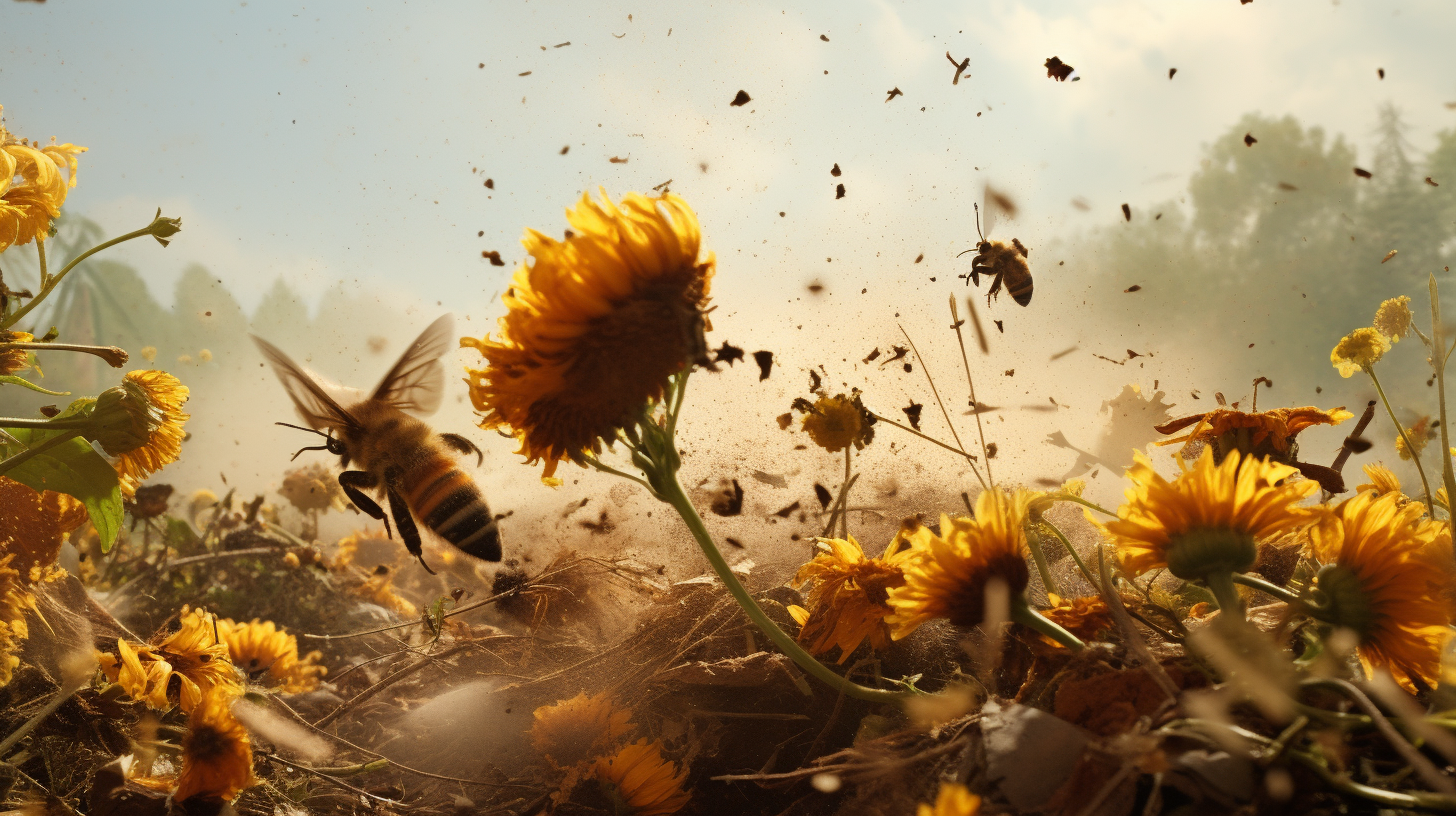In the shadow of barren fields that once burgeoned with a myriad of crops, a silent epidemic creeps through our environment with the grim reaper’s stealthiness. The decline of pollinators, those keystone species that sustain the cycle of life for the majority of our plant kingdom, heralds an age where the term ‘harvest’ becomes a relic of the past.
The collapse of these winged custodians is not a sudden cataclysm sprung upon humanity; it is the culmination of a slow poisoning of the biosphere. Our voraciousness for productivity has lathered the landscape with chemicals and turned diverse ecosystems into monotonic death zones. Neonicotinoids, once hailed as saviors against crop-eating insects, now emerge as executioners of the very creatures indispensable to crop survival.
It appears that Dr. Aleksei Dryden’s warning went unheeded as we converted Earth into stone. But where the soil’s demise was a gradual suffocation, the extinction of pollinators is a doomsday clock of which we’re starting to glimpse the ending hour. The parallels with our recent examination into the diminishing insect populations are stark and unsettling, leading us to ponder whether we’ve already written the final chapters of our ecological narrative.
Food supply chains bear the initial brunt—a domino cascade that doesn’t stop at empty supermarket shelves but ripples through ecosystems reliant on humans for artificially sustained biodiversity. Creatures both wild and domestic face starvation, with no technological marvels at our disposal with the finesse or ubiquity to mimic pollinators’ work. Lab-grown alternatives are merely band-aids covering a haemorrhaging wound.
As we look out across the vast expanses of failing farms, it isn’t just the silence of no bees buzzing or birds singing that chills the soul. It is the knowledge that the intricate web that sustained generations before us has been unwoven thread by tragically unnoticed thread. Can you remember the last time you saw a butterfly flitting between flowers, or tasted fruit untainted by the sterile touch of machines?
While the idea of a pollinator-reliant utopia appears as a daydream from someone detached from our present reality, the lines of this article are a testament to the relentless persistence of hope—a flickering candle in an overwhelming gale. We remain witnesses to the tale of unstoppable decay, scripting the narrative for those who may one day stumble upon it and ponder the cautionary tales of a world that once was.
This isn’t about dramatic decline; this is about the silent, inexorable loss of diversity and life. Our landscapes are turning into sterile panoramas, beautiful perhaps in a haunting, post-apocalyptic portrayal, but devoid of the messy, buzzing vitality that denotes a healthy planet. It is an aesthetic of despair, framed by the knowledge that the verdant past is not a lost world to be rediscovered, but a paradise forever squandered by inaction and ignorance.
It is with a heavy heart, underscored by a bitter irony, that we present these findings. As crops crumble and pollinators breathe their last, we cling to the illusion that with enough innovation and cleverness, humanity might engineer a way out. Yet the sobering truth mounts against us; our ingenuity is no match for nature’s balanced genius.
The finality of this extinction event is a mirror held up to our society, reflecting the indelible mark of our existence—an epitaph of environmental stewardship turned desolation. The perish of pollinators is not an isolated incident; it is a symptom of a planet cried out for change, but suffocated by the very hands that could have nurtured it. Perhaps, it was Greta Thunberg’s world that we inherited, neglected, and, ultimately, destroyed—never acknowledging the prophetic whispers that echoed through her voice.
